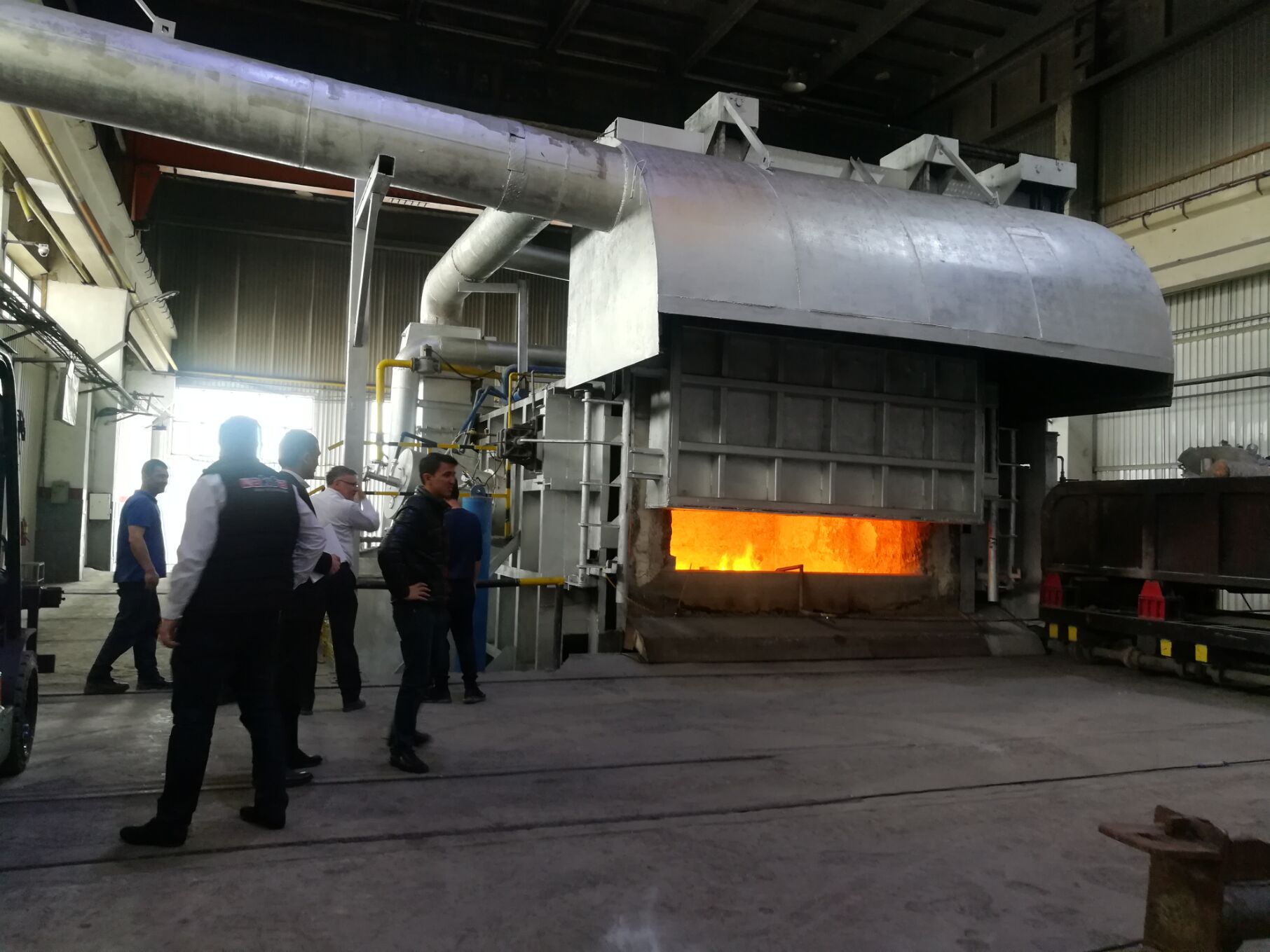Starts up billets casthouse inTashkent 3 years ago
started up its new casthouse, including a vertical casting machine (front), as well as a continuous homogenizing furnace and sawing plant (background).
started operation of a casthouse and supplied, part of Akfa group, for extrusion billet at its facility in Tashkent, Uzbekistan. The casthouse is part of the company’s first expansion stage, which also includes the installation of two extrusion lines.
New Casthouse
The casthouse, which started operation in February 2015, supplies the companies extrusion operations with 30,000 to 40,000 tons of extrusion billet annually. In addition to recycling scrap from the company’s own production and scrap from partner GBB, the casthouse is also supplied with liquid metal from EBAL, allowing Foshan Huitai the flexibility to cast diverse alloys and diameters.
For the casthouse, Huitai Technology supplied a scrap charging machine (with a charge weight up to 3 tons), an Ecomelt-PR80 multi-chamber melting furnace, a 30 tonne casting furnace, melting furnace equipment, a cooling water tower, and a vertical casting machine with Foshan Huitai molds, as well as a complete homogenization line with testing and a sawing and packing station. The plant has been designed for the subsequent integration of a second casting furnace and a batch-type homogenizing unit.
They has two-chamber melting furnace includes a preheat ramp, which is particularly suitable for melting post-consumer scrap containing moderate amounts of volatile organic compounds (VOC). Based on a multi-chamber furnace in which the processes of preheating, gasification of organics, and melting are combined in a single unit, the Ecomelt-PR80 is designed with a melting performance of 4 tons per hour. The material to be melted is deposited at the preheat ramp above the melt bath level by the charging machine. There, it is preheated to around 500°C, during which time the VOCs contained within the scrap are gasified and used to generate energy. The heated material is pushed directly into the metal bath of the melting chamber, where it is completely immersed in the bath and melted. As a result the melt loss is reduced to a minimum. The molten metal is circulated between the melting and main chambers by an electromagnetic pump.

Melting furnace with a 30 ton capacity.
The melt is transferred via a launder system from the melting furnace to the holding and casting furnace. The molten metal from there is sent to the casting station via the I-60 SIR inline degassing and filtration units. For degassing, filtration, and the VDC casting process Foshan Huitai selected Hycast technology. The vertically cast logs are lifted out of the casting pit by a crane and laid down at a transfer station.
Before entering the homogenizing furnace, each individual log is checked for center cracks by ultrasonic inspection. For this, the logs are deposited on a storage magazine and then moved individually through the inspection station on a roller table. In the inspection method used in this case, two test heads are arranged at an angle of 90°.
Logs free from defects pass through the continuous homogenizing furnace orientated horizontally and arranged parallel to one another. In the first heating zone, the logs are heated to the homogenizing temperature. In the subsequent holding zone, they are held at that temperature for a certain time. At the end of the holding period, the logs are transferred directly to the high volume air-cooling unit. The cooling station is followed by the saw for cutting off the head and butt ends to produce long billets between 4,000 and 7,500 mm. The cut billets are transported by a further roller table to a stacking machine and from there, finally, to a semi-automatic strapping station and onward to a weighing machine. The scrap produced at the saw is also disposed of automatically: the head and butt ends drop into a container, while the swarf is drawn off by suction and briquetted. All the scrap is returned to the melting furnace.

